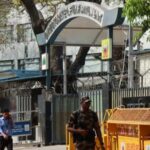Sources in the defence establishment said no parts have to be immediately replaced across the fleet but the Defect Investigation Committee has given certain recommendation on the checks and quality parameters that the operators should follow.
The entire ALH fleet—comprising more than 180 Army ALHs (including 60 Rudra armed variants), 75 Air Force helicopters, 24 Navy and 19 Coast Guard helicopters—has been grounded since a of a Coast Guard helicopter that killed three personnel in January.
Last week, however, the helicopters got limited clearances for operations in Jammu and Kashmir due to the ongoing with Pakistan, with operations permitted only in specific emergency cases.
Tension has ratcheted up between India and Pakistan after the 22 April terrorist attack in Jammu and Kashmir’s Pahalgam that killed 26 people. India holds Pakistan-backed terror groups responsible for the attack and has taken a series of punitive measures. Pakistan has responded with tit for tat measures.
Sources said initial investigation in the January crash pointed to a fracture in the swashplate, a critical component in the helicopter’s transmission system that translates pilot inputs into rotor blade motion.
A fleet-wide inspection later revealed cracks in the swashplates of some Navy and Coast Guard ALHs, particularly those operating in saline maritime environments, raising concerns about material fatigue and environmental stress.
Since its induction, the ALH platform has logged over 450,000 flight hours and served critical roles in transport, logistics, reconnaissance and search-and-rescue missions, especially in high-altitude and border areas.
However, it has also faced a troubled safety record with at least 28 crashes reported over the past 25 years.
(Edited by Ajeet Tiwari)








